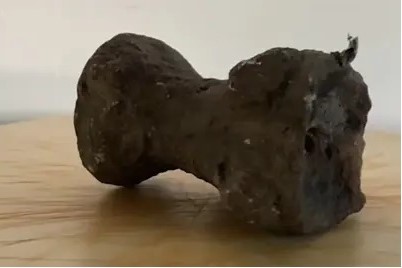 Discovering the Uruguayan dinosaur
Discovering the Uruguayan dinosaur
A new species of dinosaur has been described based on fossils discovered in a site in Uruguay owned by UPM. When observing, it’s more than just looking. In March 2024 news of a new milestone in Uruguayan paleontology started to spread (El País Uruguay). Let me share how we arrived at this point.
A bit of history...
Approximately 20 years ago Dr Eduardo Marchesi, an eminent Uruguayan botanist, was exploring a property owned by UPM Forestal Oriental, carrying out a vegetation survey. In a gully (an eroded area), he noticed scattered “stones,” but upon closer examination realised they were not ordinary rocks. Instead, they were distinctive fossils, remarkable for their size and weight, belonging to a large animal.
Despite previous visits by others, including a geologist, no one had identified the significance of these fossils. This is the difference between observing and just looking.
This discovery marked the beginning of a journey that continues to this day. The Heritage Commission of Uruguay received the report on the finding and referred it to the Department of Paleontology at the Faculty of Sciences of the University of the Republic of Uruguay (Universidad de la República Uruguay, Udelar). Dr Daniel Perea and his team collected all scientifically relevant material. Additionally, the company designated the area as a conservation zone, implementing protective measures and safeguarding the remaining material for future investigations.
After a period of study, researchers reported the first record of sauropod dinosaurs in Uruguay based on these fossils.Over time, subsequent publications have provided further insights into this exciting discovery (1).
It’s fascinating to uncover how these ancient giants once roamed the land we now call Uruguay.
The most recent discovery
Two years ago DrPerea’s team revisited the fossils we kept in safe perhaps with a fresh perspective and additional data. What they found was truly fascinating: the fossils belonged to a species not yet described by science, and it is the first entirely Uruguayan titanosaur (a group of large herbivorous dinosaurs). These majestic creatures roamed our land more than 80 million years ago.
Until February 2024, Uruguay had only identified carnivorous dinosaurs at the genus level, such as Torvosaurus and Ceratosaurus from the Late Jurassic (both approximately 150 million years old), and the herbivorous titanosaur Aeolosaurus from the Late Cretaceous (between 100 and 66 million years ago). Additionally, another study reported a Late Jurassic carnivore belonging to the Abelisaurid group, although its gender remained undetermined.
However, in March 2024, a team of paleontologists from the Faculty of Sciences at the Udelar in Montevideo, along with colleagues from Argentina and Brazil, successfully identified the genus of a Late Cretaceous titanosaur based on fossils found in Paysandú. This marks the fourth known dinosaur genus in Uruguay. But there’s more... Not only did they determine the genus, but they also identified the species – a first for a dinosaur in the nearly 100 years of professional paleontology in Uruguay. Furthermore, this genus and species are entirely new to science.
In their publication titled “Phylogenetic Relationships of a New Titanosaur (Dinosauria, Sauropoda) from the Upper Cretaceous of Uruguay” paleontologists Matías Soto, Felipe Montenegro, and Daniel Perea from the Institute of Geological Sciences, along with colleagues José Carballido (Museo Paleontológico Egidio Feruglio, Argentina) and Max Langer and Julian Silva (University of São Paulo, Brazil), officially named this dinosaur Udelartitan celeste. The name pays tribute to the University of the Republic and the colour that represents all Uruguayans through the great passion for football that we have in our country: celeste, light blue, is the colour strongly associated with Uruguay’s national football team.
Udelartitan celeste is the first entirely Uruguayan titanosaur, and at 15 metres (49 feet) long it falls into an intermediate size category among those described so far – approximately 80 worldwide.
At UPM Forestal Oriental we are proud to be guardians of this remarkable site, which led to the country’s primary paleontological discovery, as reported by the cited authors.
Media impact:
